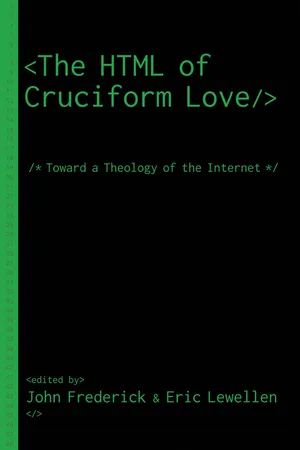![]()
1
The Discipline of the Eyes
Reflections on Visual Culture, Ancient and Modern
Ben Myers and Scott Stephens
“Like hospitality or any other virtue, the good gaze develops through practice.” —Ivan Illich
“If your right eye causes you to sin, tear it out and throw it away.” —Matt 5:29
Margaret Atwood’s novel Oryx and Crake (2003) depicts a dystopian society dominated by images. Two boys, Jimmy and Crake, click idly back and forth between porn sites, animal snuff sites, and live coverage of executions and assisted suicide. They are fascinated in equal measure by images of sex and images of cats being torn apart by hand; by nude newsreaders and live beheadings in front of cheering crowds; by scenes of paedophilia and scenes of live open-heart surgery. The sex and brutality blur together,
All these images of sex and violence, however, are not “real” in any straightforward sense. The boys suspect that the Chinese beheadings and Middle Eastern stonings are probably filmed somewhere in California, with crowds of hired extras standing around cheering. The websites don’t simply supply images of reality. Rather, reality is produced for the sake of the image. Just as porn actors fake arousal for the sake of the camera, so, in Atwood’s dystopian cyberspace, “the guys being executed had started hamming it up for the cameras.” In this dystopia, assisted suicide rates have skyrocketed as a result of the popularity of live suicide websites. “There was said to be a long lineup of people willing to pay big bucks for a chance to appear on it and snuff themselves in glory, and lotteries were held to choose the participants.” Reality exists for the sake of the image, and the image exists to meet an insatiable demand: what the Bible calls “the lust of the eyes” (1 John 2:16).
The most disturbing thing about Atwood’s dystopia is the fact that it is instantly recognizable as a parody of our image-saturated society. Christians today live in a society of the spectacle. Our lives are dominated to an unprecedented degree by images and by the moral act of looking at them.
The pages that follow will first explore early Christian thinking about the role of the eyes in the moral life. Early Christian teachers wrote and preached extensively about the moral and spiritual use of the eyes. They developed a thorough critique of the ever-popular public shows and commended visual disciplines as a normal part of the baptized life. One of the distinguishing marks of Christians was the way they used their eyes. Turning to an analysis of contemporary visual culture, we will argue that the prodigious consumption of online images has all but eviscerated the moral life, and that moral recovery might depend on a new practice of visual asceticism—the fasting of the eyes.
Early Christian Teaching on Public Spectacles
The one who looks—“merely” looks—is often assumed to be passive. But for early Christian teachers, looking was a moral act. More than that, it was a spiritual act that exposes a person’s innermost being to external influences, whether malignant or benign. The eyes, along with the other senses, were considered to be gateways to the spiritual world.
Very early in the history of Christian thought, it became something of an ethical axiom that the eyes are instruments of moral agency. The second-century Athenian apologist, Athenagoras, pointed out that the chastity of Christians extends even to the functioning of their eyes.
Likewise Christians take nonviolence so seriously that their eyes avoid violence. “We cannot bear even to see a person put to death,” Athenagoras observes. And frankly admitting the appeal of the public shows, he says: “Who is not enthralled by armed contests and animal fights . . . ? But we have renounced such spectacles, judging that to look on murder is much the same as murder itself.”
The baptismal language of renunciation is invoked to describe the stance of Christians towards the shows. Abstaining from public entertainments is assumed to be one of the marks of the Christian community. The eyes are not passive. They are moral and spiritual organs. They can commit adultery and murder. Or they can shine like lamps.
Writing a century later, the North African apologist Lactantius similarly described the moral agency of the eyes:
Cyprian of Carthage condemned both the violence of the shows and the ocular violence of the spectators. He described the public entertainments in the great cities as “death processions” and lamented that the whole world seemed intoxicated by human blood. At the games, he said, “a man is slain for human sport. The ability to kill is a skill, it is an exercise, it is an art. . . . The ability to destroy a man is a discipline.” But the cruellest thing of all, in Cyprian’s view, was not the armed gladiator but the spectator. After all, the supply of public violence is linked to demand. Were it not for the eager eyes of the spectator there would be no such violence: “The gladiatorial game is laid on so that the bloodshed might entertain eyes that reflect a merciless blood lust.” Even the families of gladiators will pay an entrance fee to come and watch their loved ones battle to the death. By becoming spectators, Cyprian argues, such a family becomes guilty of parricide: “They do not stop to think that with their eyes they are murderers of their relatives.” It is not only the contestants who kill; the eyes of the spectators commit murder too.
John Chrysostom drew on the same moral principle of the complicity of the eyes in what they see. He instructed his catechumens about attendance at the public shows, telling them:
